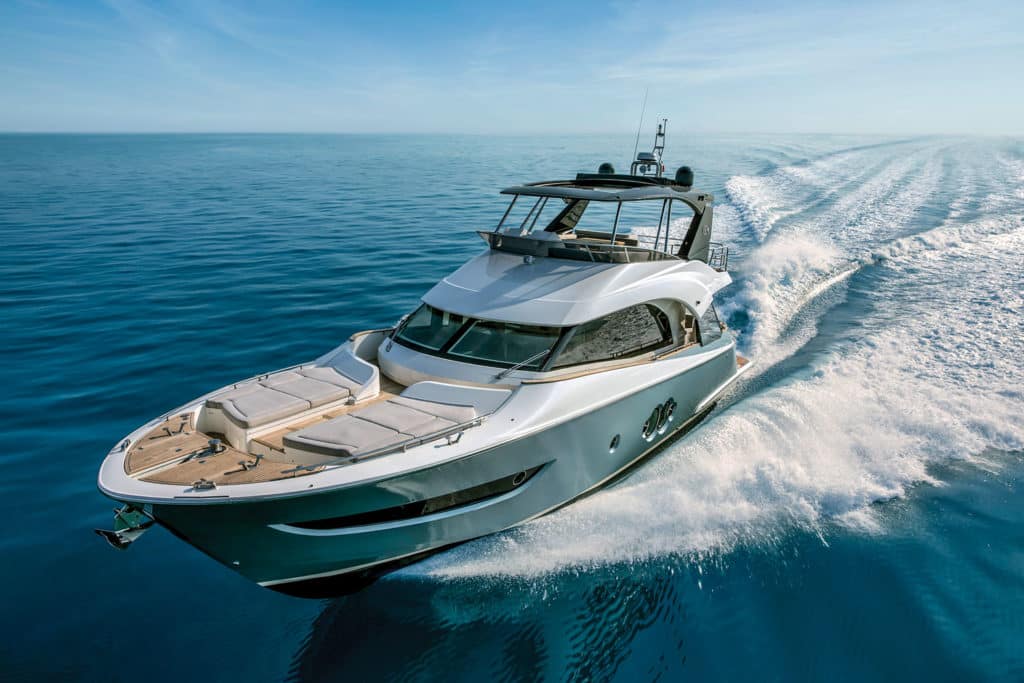
When I first saw the Monte Carlo Yachts 66, I thought back to my dad’s 1956 Thunderbird. He spent the better part of a decade restoring his beloved two-seat convertible. The look of the ’56 was unmistakable. There were its trademark short fins. A hardtop with porthole windows, and a soft top. Electric seats and power windows, both features almost unheard of in 1956. Whitewall tires. And chrome everywhere.
The look was so aligned with the Thunderbird brand, and so ingrained in the psyche of American motorheads, everyone knew her the minute they saw her cruising down the road, and the car always got a thumbs-up when people passed by.
The same sensation those drivers got seeing my dad’s car hit me when I saw the Monte Carlo Yachts 66 sitting quayside in Portopiccolo, Italy. Taking in her profile, it was immediately evident that Monte Carlo Yachts’ brand DNA is strong. And purposeful.
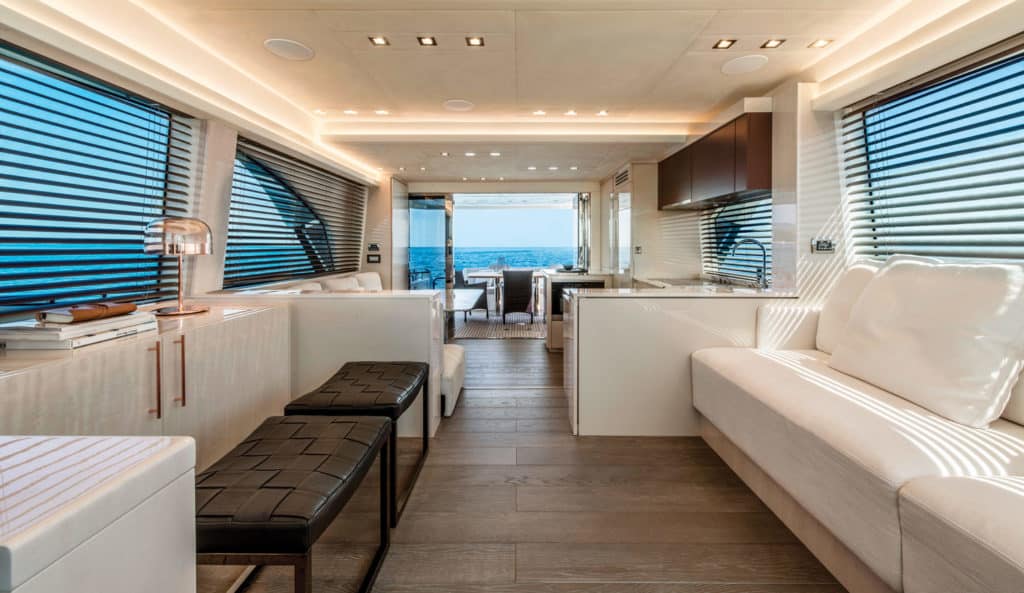
For example, the yacht’s porthole windows amidships, flanking the full-beam master stateroom, are an MCY hallmark. My eyes moved from there to the carbon- fiber retractable hardtop shading almost the entire flybridge. There was the metallic hull paint. Finally, I gazed at the sweeping superstructure that flowed in the shape of a curious brow from the flybridge down toward the teak cockpit.
It’s because of these DNA traits, among others, that when MCY created its three 2019 models—a 70-footer has also launched, and a 76-footer is on its way—the builder chose not to make radical design changes but rather take an evolutionary approach.
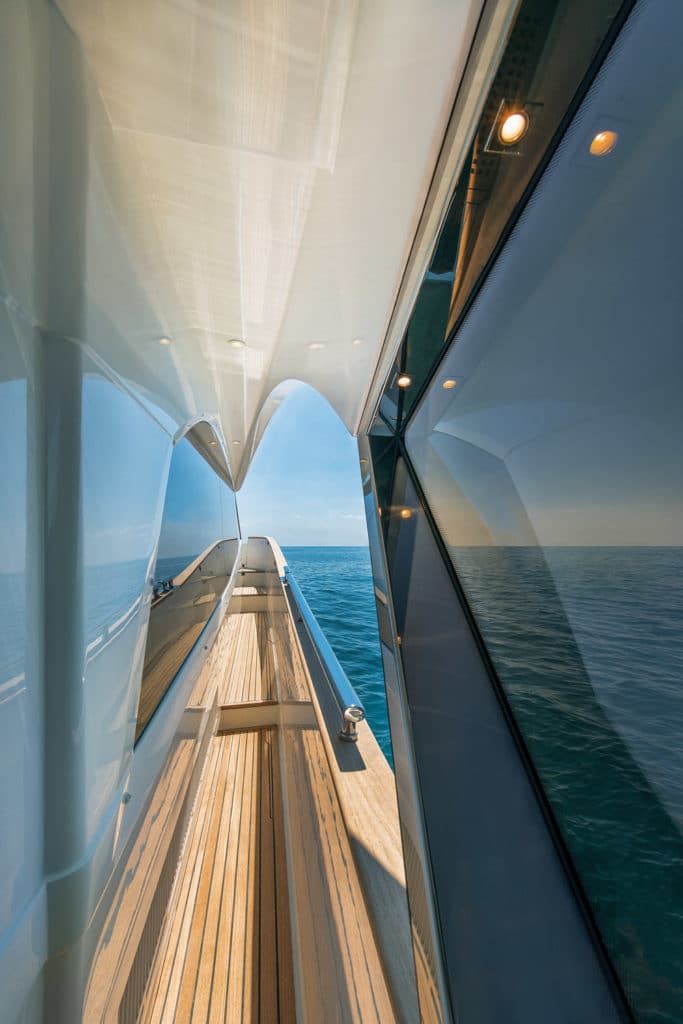
So what are the changes to the MCY 66 compared with her 65-foot predecessor? An extra foot of length, for sure. But there is more: The amidships portholes maintain the same shape as those on the 65, but they increased in size by about 20 percent, letting in more light and enhancing views. There is also about a foot of additional floor space in the new master. The builder repositioned the entrance to the stateroom and repositioned the shower to get those 12 inches.
Additionally, there are 45-inch-long rectangular windows with inset portholes flanking the forepeak VIP stateroom, which has an en suite head. (The MCY 65 just had portholes.) The rectangular windows are 13 inches at their widest point and 10 inches at their narrowest. They look black from the exterior and appear to lower the yacht’s profile. Headroom in the VIP is 6 feet, 5 inches. These attributes help create a sense of airiness.
A third stateroom is abaft the VIP to starboard with twin berths and access to a third head, which also serves as the day-head. There is a crew cabin for two all the way aft.
MCY reduced the thickness of the fiberglass superstructure versus the 65’s, increasing the glass that surrounds the 66’s salon. When combined with low-back furniture, the result is more light and a better connection between the interior and exterior spaces, not to mention the sense of openness on board.
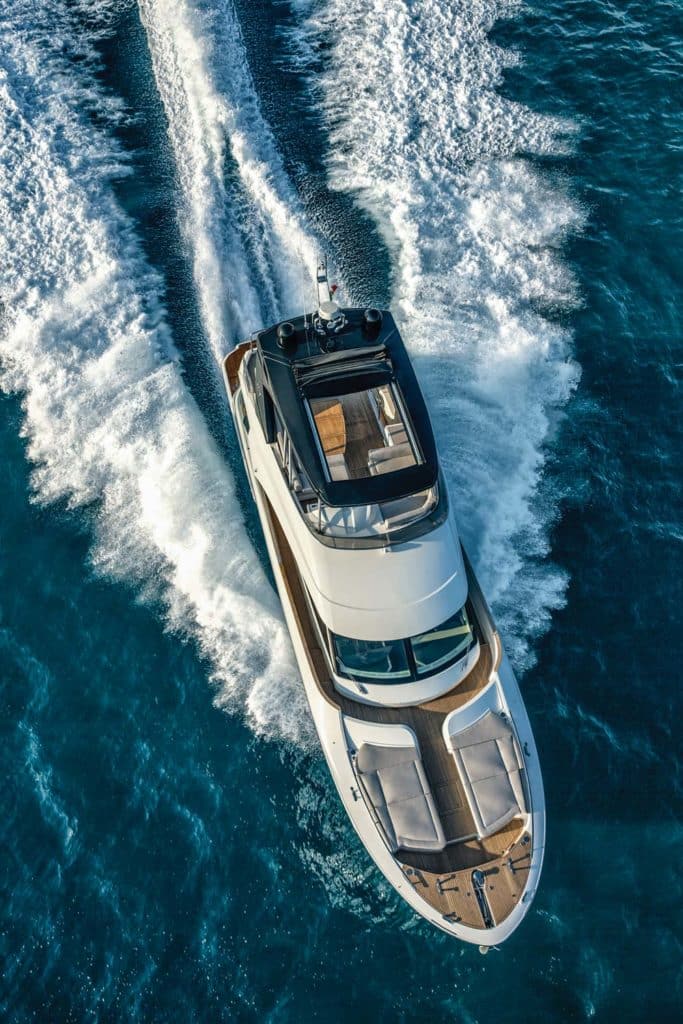
One measurable change from the MCY 65 is found on the MCY 66’s flybridge. Floor space here increased by about 40 square feet. What was once an L-shaped settee to port across from the helm is now U-shaped. There is also an L-shaped settee with a teak table abaft the helm bench seat. The retractable hardtop opens almost the entire flybridge to the sun.
One thing that remains the same is the yacht’s high freeboard and aggressive entry, reminiscent of the look found on sport-fishing yachts but not overdone. Her appearance says that she is willing to go head-to-head with the sea should it get into a snit.
Supporting the MCY 66’s take-on-the-salt aesthetic is a vacuum-infused fiberglass hull with foam coring. MCY says this build process optimizes the fiberglass-to-resin ratio and reduces overall weight. Internal aluminum supports further enhance strength. The yacht displaces 72,000 pounds (dry weight).
Fiberglass parts are post-cured in a three-stage process inside the builder’s 10,760-square-foot painting shed, which also functions as an oven. The room heats up to about 149 degrees Fahrenheit, and the stabilization process takes about 14 hours. The temperature then drops during the next 10-plus hours. This method reduces emissions while allowing for polymerization, which strengthens the fiberglass’s physical properties and should ensure long life for the hull paint.
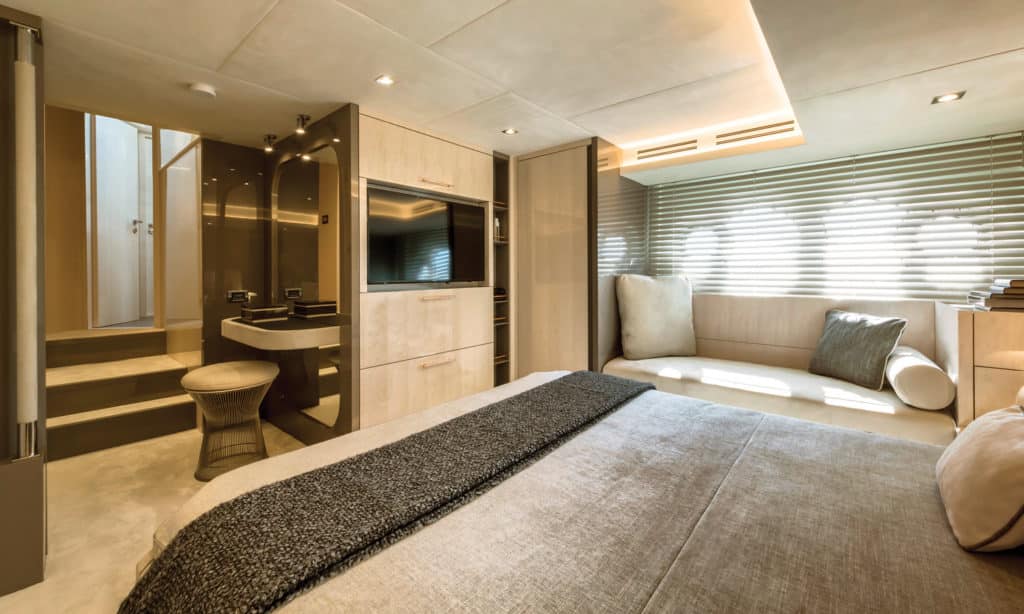
MCY uses a modular build system to enhance construction efficiency. The hull, interior and superstructure are built in parallel. A one-piece interior module is completed in a jig, where workers can run wiring and glove-fit internal bulkheads, furnishings and the like. This setup allows staff to work both above and below the deck simultaneously, further expediting construction time. The process also helps keep build tolerances to within about 1 millimeter. Build time for an MCY 66, from the infusion to launch, is about four months.
The same level of organization applied to the MCY 66’s construction process is found in the yacht’s main-deck layout. Glass cockpit doors open to an unimpeded walkway on centerline from the cockpit to the helm forward. The galley is aft with Miele appliances, including a four-burner electric cooktop and microwave/convection oven. There’s also a full-height refrigerator.
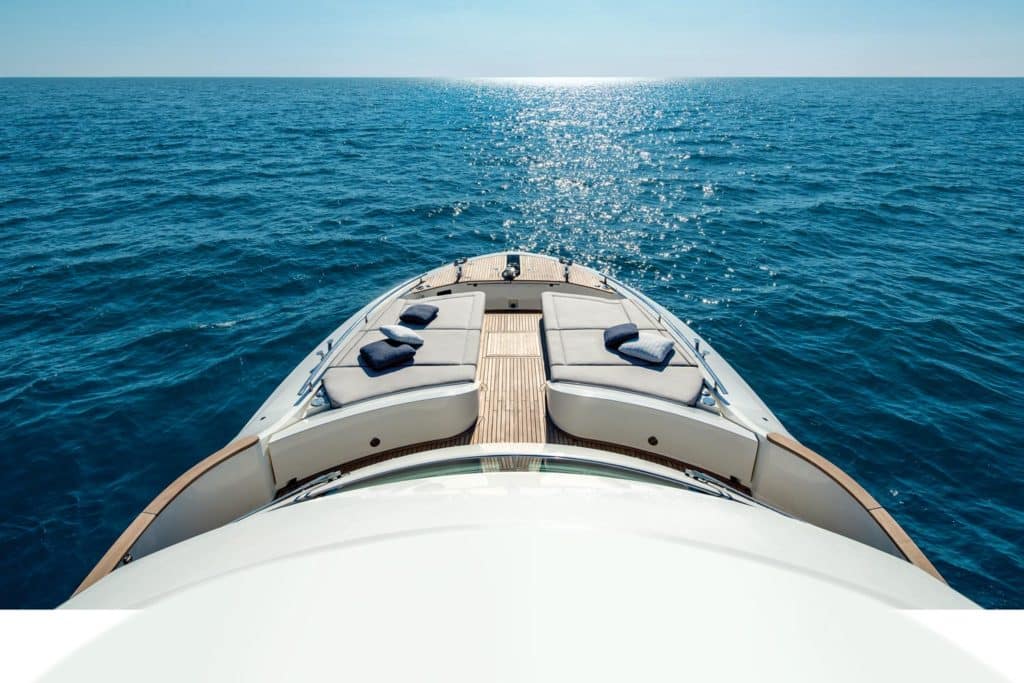
It’s one step up into the salon, which has an L-shaped settee to port and benches across. Light-tone furnishings, glossy white-and-gray marble, a gray oak sole, and lacquered Tanganyika wood work in concert, creating a modern yet inviting space. The clean look could be defined as simple, but as designer Dan Lenard says, “Minimalism requires more work than opulence.”
The evolutionary design plan seems to work well for the Monte Carlo Yachts 66, and I’m sure that many yachtsmen will be giving her the thumbs-up as she passes by on the water. Maybe even two.
Take the next step: montecarloyachts.it








